Lab Members
Dr. John David Griffiths
Group Lead
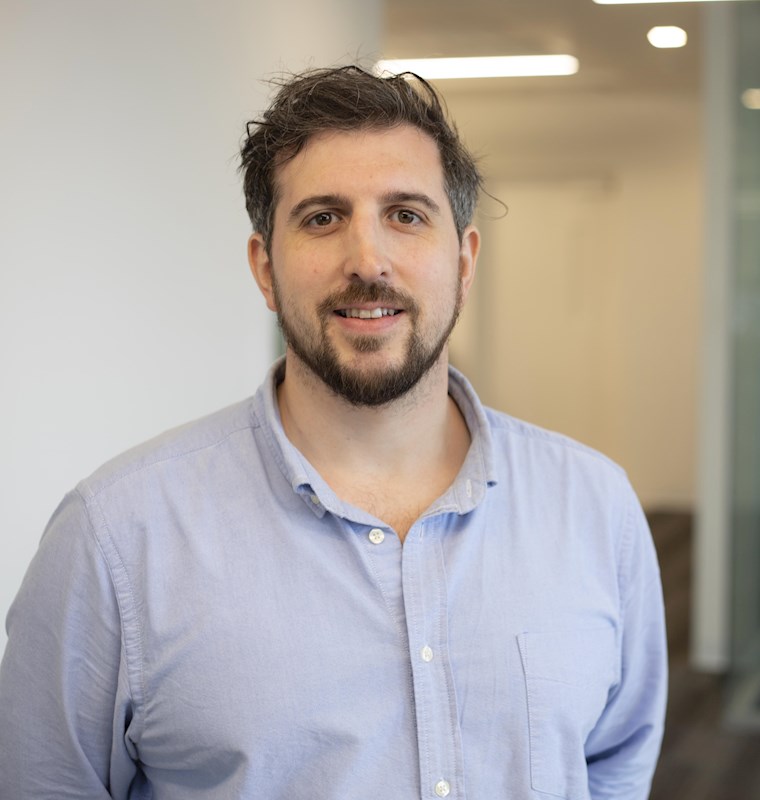
Dr. John D. Griffiths is a cognitive and computational neuroscientist based at the Toronto Centre for Addiction and Mental Health (CAMH)’s Krembil Centre for Neuroinformatics (KCNI; krembilneuroinformatics.ca), where he leads a research team focused on computational modelling of brain network dynamics, neurostimulation, and multimodal neuroimaging data (www.grifflab.com). He is an Assistant Professor in the University of Toronto Departments of Psychiatry, Medical Sciences, and Biomedical Engineering. Originally hailing from North-West England, Dr. Griffiths completed his PhD at the University of Cambridge, where he worked on structural and functional neuroimaging of language comprehension and its impairment in ageing and stroke. Prior to this, he completed his undergraduate training in psychology, philosophy, and cognitive neuroscience at the Universities of Warwick and York, UK. Subsequently, he worked as a post-doctoral fellow in the groups of Peter Robinson (University of Sydney School of Physics), Randy McIntosh (Rotman Research Institute) and Jeremie Lefebvre (Toronto Western Hospital). During this time he conducted research and developed core expertise in multimodal neuroimaging and macro connectomics, neurophysiological modelling and numerical simulations, neural field theory, and noninvasive neuromodulation. He also was an early contributor to the The Virtual Brain (TVB) software library and research consortium. Dr. Griffiths joined the CAMH KCNI as a PI and head of Whole-Brain Modelling in 2019, where he leads a multidisciplinary team of engineers, physicists, mathematicians, biologists, and psychologists, working on endogenous oscillations and neurophysiology of noninvasive brain stimulation. The theory-based work of the group is complemented by novel EEG, fNIRS, TMS, and MRI experiments in healthy and patient populations.
Dr. Davide Momi
Post-Doctoral Fellow
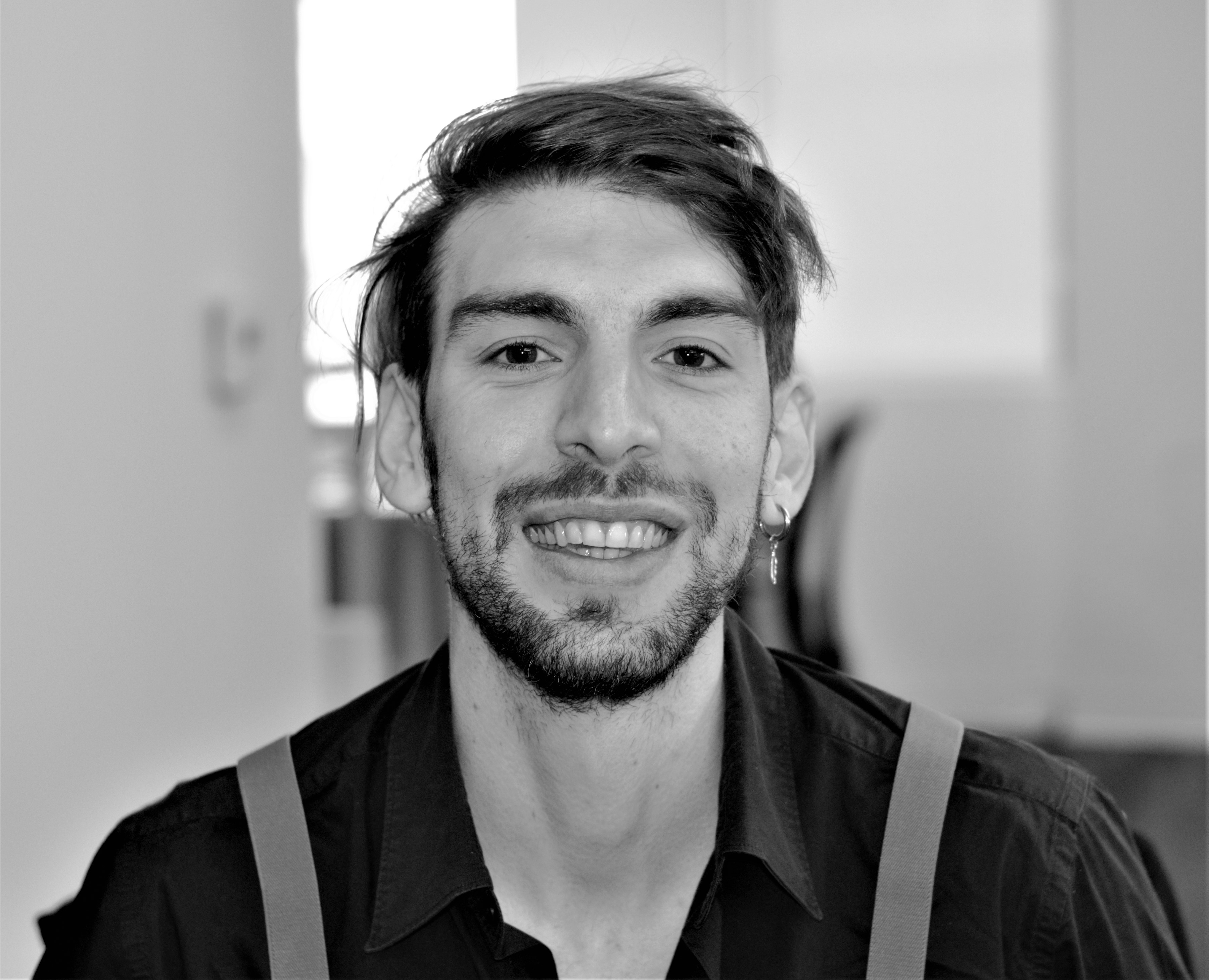
Research Interests:
Davide completed his Ph.D. at the Department of Neuroscience, Imaging and Clinical Sciences at the University G. d’Annunzio of Chieti. As part of his PhD, Davide attended a period abroad as a visiting PhD student at the Martinos Center for Biomedical Imaging in Boston. Prior to his doctoral studies, he obtained a Master’s degree in Neurosciences and Neuro-Psychological Rehabilitation from the University of Bologna and a Bachelor’s in psychology from the University of Perugia.
Davide has experience with multimodal neuroimaging data (e.g. DWI, fMRI, ASL) analysis, TMS applications, EEG data collection and analysis, quantitative structural MRI assessment (e.g. brain morphometry, cortical thickness, etc.), machine learning, cognitive tasks development with a growing passion for simulations of network-level macroscale brain dynamics. His main interest is focused on predicting the TMS signal propagation at the network-level, based on neuroimaging and electrophysiological data.
At the WBMG, Davide will be working on several projects which will involve multimodal neuroimaging, non-invasive brain stimulation (TMS, TES) and whole-brain modelling. The primary aim of his project is to predict TMS outcomes by combining computational, neuroimaging and electrophysiological approaches.
Trivia about Davide:
As a proud Italian, Davide never forgets to renew his membership for the “fighting against pineapple on pizza” (a.k.a. Hawaiian pizza) movement. He conducts a healthy lifestyle. He goes to the gym; he likes to hike and go for walks surrounded by nature. Davide is an enthusiastic basketball fan and he used to play semi-pro in the past. He is 6 ft 6 in. tall and is gradually getting used to his height.
Sorenza Bastiaens
Ph.D. Student
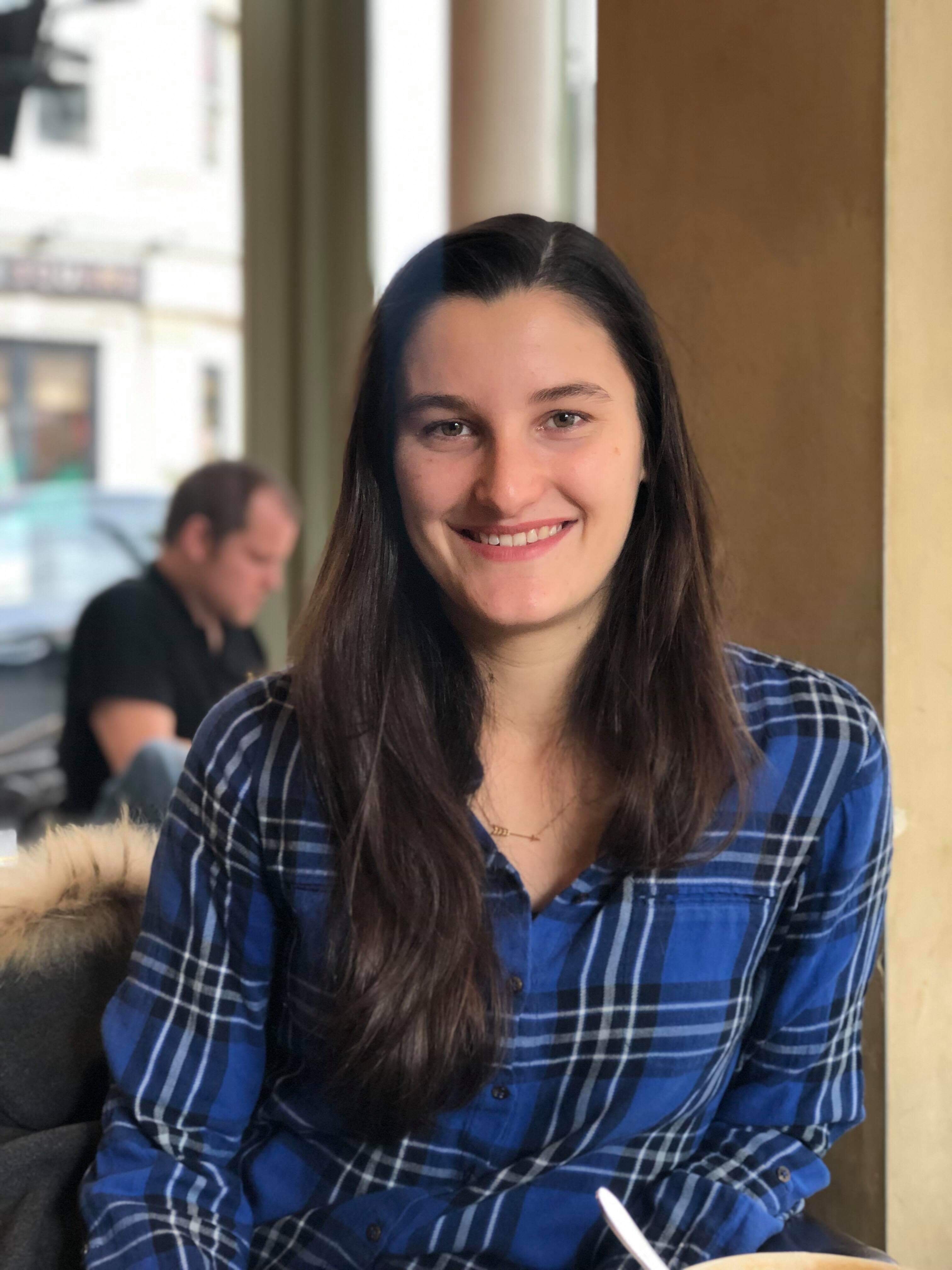
Research Interests:
Sorenza officially joined the lab in January, 2021. She completed her M.Eng. in Biomedical Engineering at Imperial College London, with a final year project at the Neural Coding department. She first worked with Dr. John Griffiths during Google Summer of Code 2020 where she developed a python package for running validation tests on models generating a neural power spectrum.
Sorenza’s research in the lab is focused on mathematical modelling of large-scale brain network dynamics, with a focus on measured alpha oscillations observed in EEG. The aim of her project is to use and extend these computational models to better understand the role of brain rhythms in large-scale brain networks. She is also interested in understanding how brain stimulation affects these networks, which is crucial to finding treatments for neurological diseases.
Sorenza is currently applying her skills in computational neuroscience, neuroimaging and signal processing to compare and analyze different cortico-cortical and corticothalamic models such as the Jansen-Rit, Wilson-Cowan and Robinson models.
Trivia about Sorenza:
Sorenza is the ‘sporty’ one. She is always down for pretty much any physical activity and particularly loves to play football (aka soccer), tennis, and loves to go running and hiking. She claims to have a mild coffee dependency. Her day has to start with a cup of coffee, it is non-negotiable apparently. The rest of her day involves some form of working out and meditation routine, followed by a session of reading. Sorenza is no stranger to the world of video games and enjoys playing action-adventure and battle royale games. She is a huge fan of Harry Potter (#Gryffindor) and sci-fi shows. Her secret talent is juggling and bad singing.
Kevin Kadak
Ph.D. Student
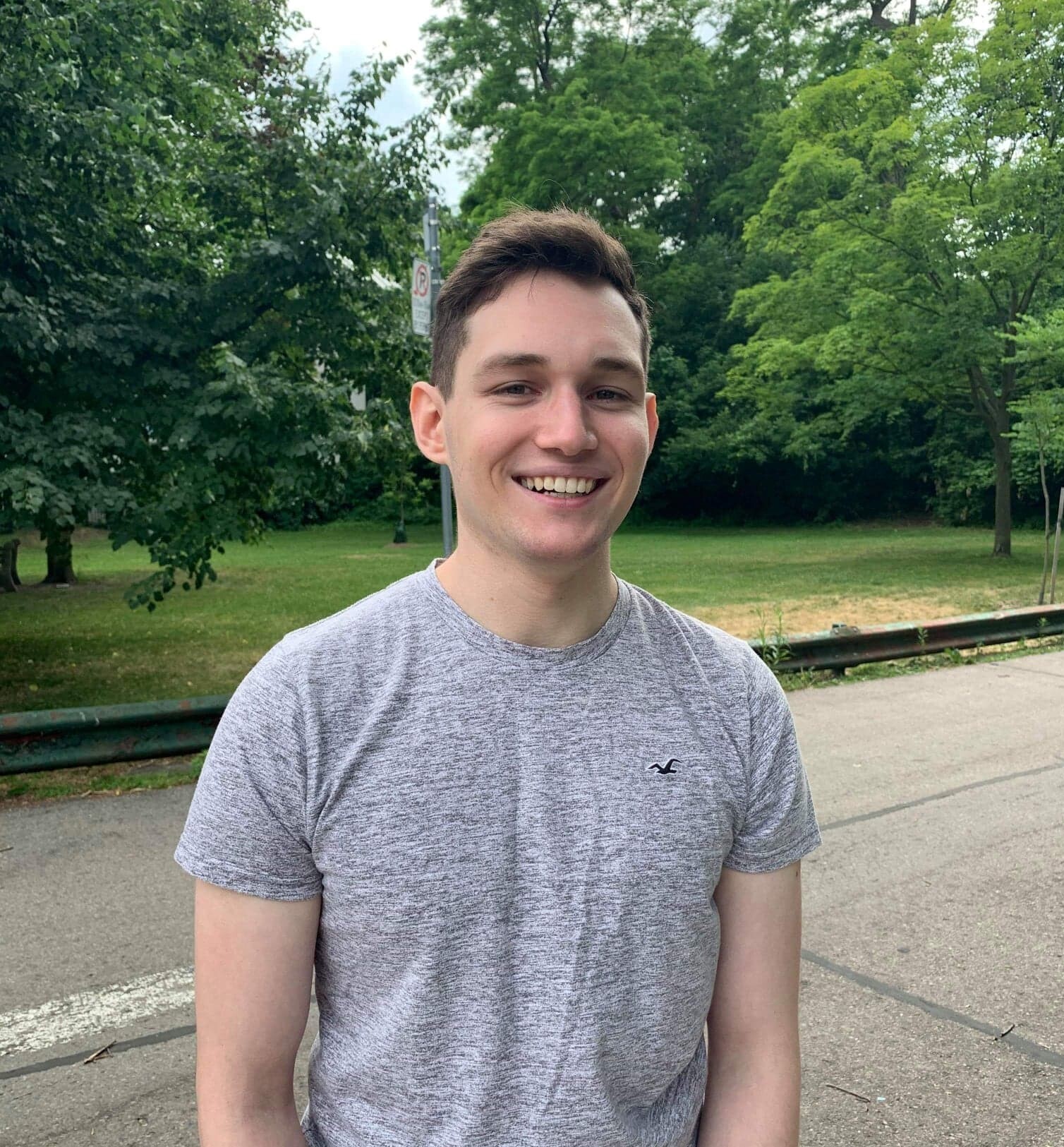
Research Interests:
Kevin is a Ph.D. student who joined the lab in September, 2020. His research focuses on modelling synaptic plasticity dynamics in the brain to better optimize TMS stimulation parameters for the treatment of major depressive disorder. Within the theories of calcium-dependent plasticity and metaplasticity, he will be expanding current synaptic simulation models to encompass E-fields estimates, white matter connectivity, cortical geometry, and corticothalamic oscillations to project patient-specific stimulation protocols. This may aid in more robust, long-term neural rewiring and treatment. Both structural and functional imaging techniques, including fMRI and EEG, will be utilized to inform these models.
He looks forward to leveraging his previous experience in modelling zebrafish decision patterns towards further refining his computational skillset and, most ideally, constructing novel frameworks for applied clinical use.
Trivia about Kevin:
When the world isn’t collapsing in on itself, Kevin enjoys Brazilian Jiu-Jitsu, thrift shopping, bothering others with puns, and practicing guitar despite never actually managing to improve at it. Kevin is a firm believer in carbonated water, pineapple on pizza (DO NOT put him on a group project with Davide!), and cutting sandwiches diagonally. He also spends his spare time convincing the world that Sky High (2005) is a cinematic masterpiece. When not involved with one of these activities, Kevin is probably squinting at code documentation, confused.
Minarose Ismail
PhD Student
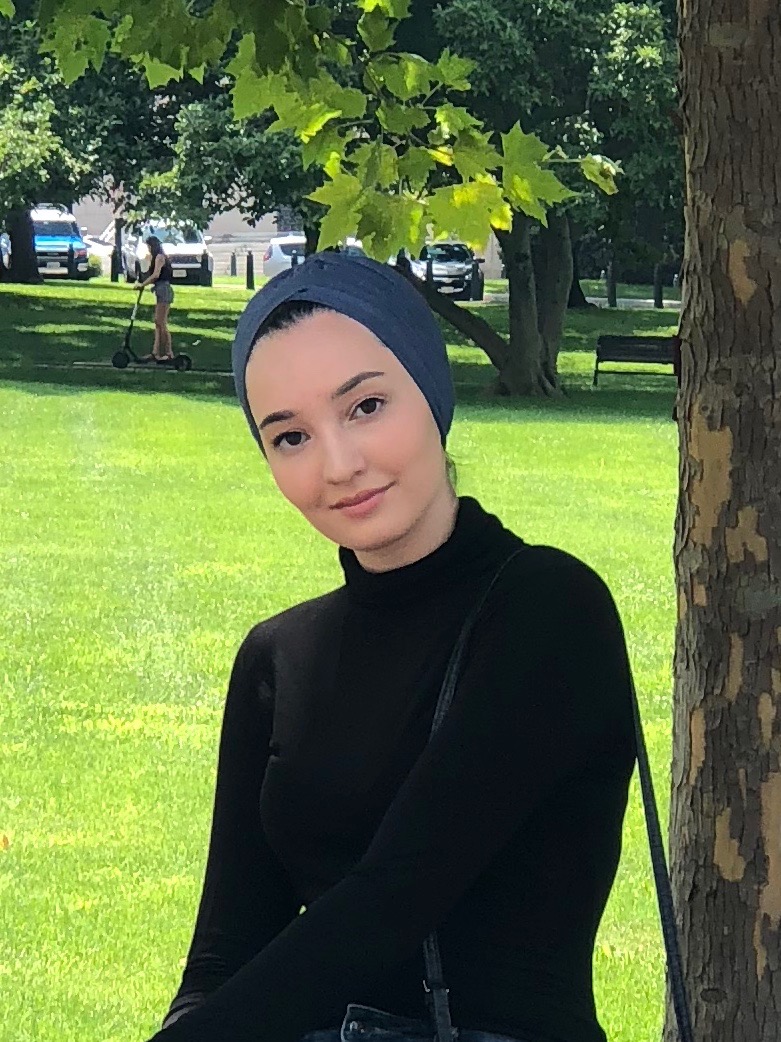
She is currently a PhD Student at GriffLab. Prior to this, Minoarose was a summer research student during the summer of 2019. She was a first year undergraduate student at McMaster pursuing a bachelor in Neuroscience with a background in Python coding. Her work was in the field of computational neuroscience and her project dealt with fitting oscillations and one over frequency on MEG data using the FOOOF toolbox to parametrize the power spectra and perform summary analysis.
Lab Alumni
Shreyas Harita
Ph.D. Student
Currently: Senior Methodologist @ the Data and Insights team at CAMH
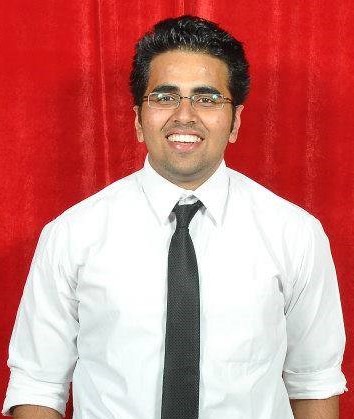
Research Interests:
Shreyas is a Ph.D. student who joined the lab as a Research Trainee in May, 2019. His research interests lie in the use of connectome based neural mass modeling to study neural population activity, and how it changes in response to brain stimulation and in neuropathological conditions. The primary aims of his research project are as follows:
- To investigate the stimulation-induced network propagation and connectivity patterns in the human brain. He hopes to achieve a better understanding of this using brain stimulation techniques like TMS and multimodal brain imaging techniques such as structural MRI, fMRI, DTI, and EEG.
- To study how individual variability in brain geometry affects responses to brain stimulation, and how this information can inform neuro-navigation techniques to improve the identification of potential TMS targets.
Trivia about Shreyas:
Shreyas claims to be the ‘funny’ one. No one else sees it. Shreyas’ favourite cuisines include Indian, Mexican, Arabic and Italian. He is the unofficial social director for the students at the lab and while no one really appointed him, they like the fact that he tries to bring people together. Shreyas leads an active lifestyle. He plays football (soccer), swims and enjoys biking (even in the winter!) within the city and on natural trails. Shreyas is an avid chess player and enjoys playing blitz and bullet chess.
Taha Morshedzadeh
M.Sc. Student Currently: Biosignal Research Engineer @ InteraXon (Muse)
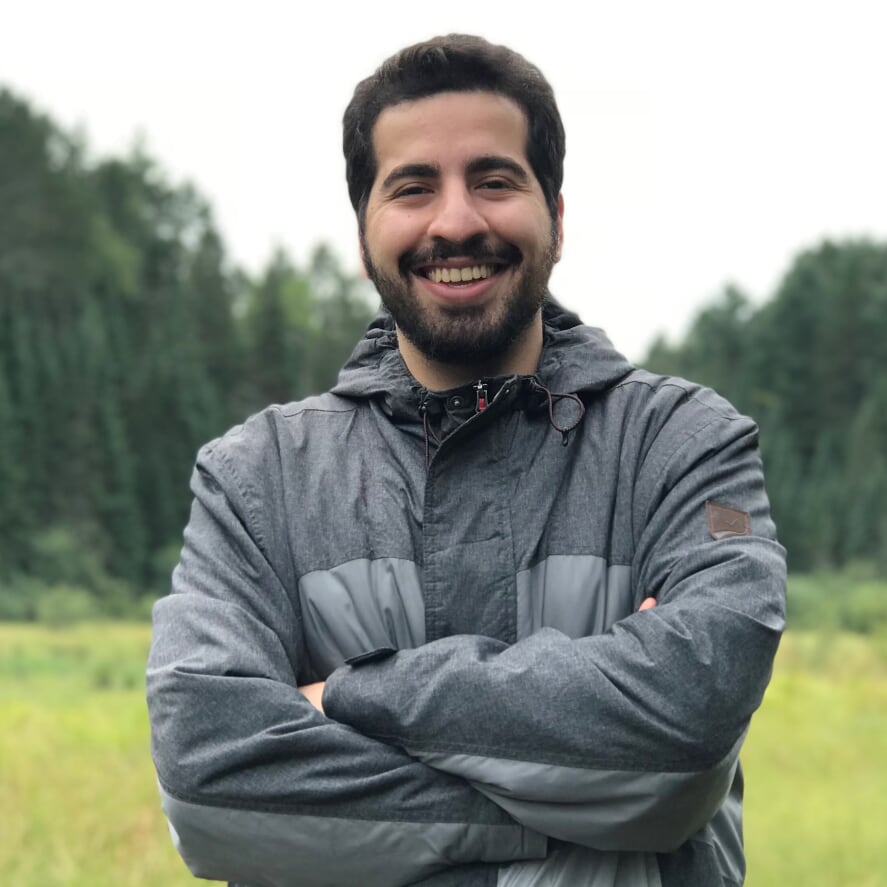
Research Interests:
Taha initially joined the lab as an undergraduate research student in January 2021. He started his M.Sc. here in September 2021. He is working on data aquired from market-available electroencephalography headsets such as Muse S, and will be fitting thalamocortical neural field models to this data.
He studied Dentistry in Iran for 3 years before dropping out in 2016 to do Neuroscience in Canada. During this time in Iran, he worked with Prof. Mohammad Nami on EEG data. He completed his BSc in Neuroscience at the University of Toronto in 2020. His undergraduate supervisor was Dr. Milad Lankarany with whom he worked on modelling basal ganglia neurons in Parkinson’s Disease. He also co-leads NeurotechUofT (neurotechuoft.com), a NeuroTechX student club working on open-source BCI projects.
Trivia about Taha:
Taha enjoys running in the hills of Toronto suburbs and city biking. You can always find him up to some shenanigans on Strava. He also redecorates his home almost every two weeks. He says he doesn’t need to see a therapist about this and promises that he’s good. Taha enjoys listening to and singing Persian traditional music and is trying to get into composing as well! Taha would like to use this tribune to support Davide in his fight against all evil (i.e., pineapple pizza).
Parsa Oveisi
M.A.Sc. Student
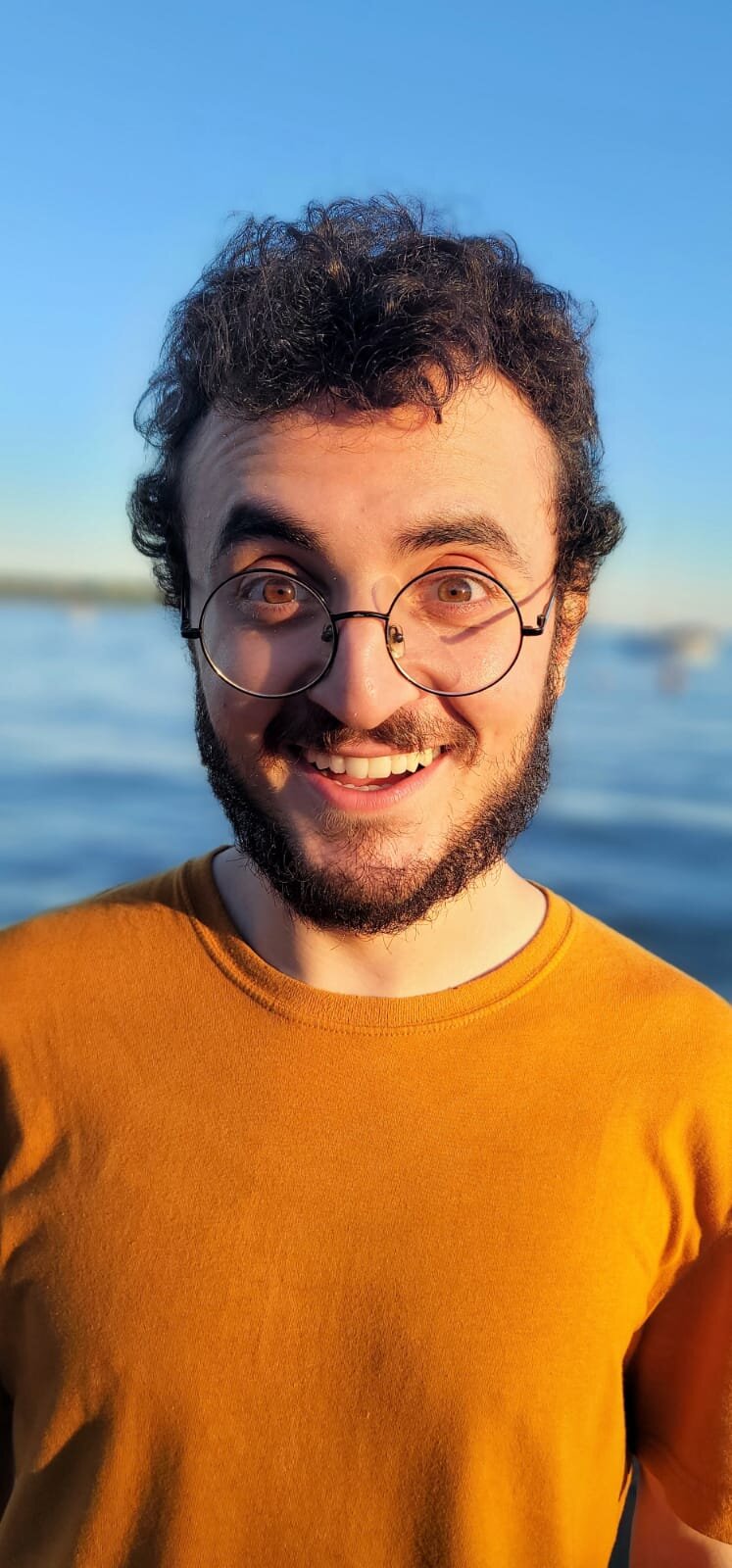
Research Interests:
Parsa joined Grifflab in September 2021 as an undergraduate research student. Parsa’s overarching interest in learning about new frameworks in which the
functioning of the brain can be described. Currently, Parsa is working on data acquisition of concurrent EEG and functional near-infrared spectroscopy (fNIRS)
recordings using the Kernel Flow ™ headset. He is then using this data, as well as other EEG and fMRI/fNIRS datasets, to develop a deep learning-based whole brain
model that can be fitted to individual brains. The model can then be used to predict empirical EEG and hemodynamic responses, as well as shedding light on how
patterns from these different modalities arise and interact. Parsa officially joined the lab as a Master’s student in September 2022.
Trivia about Parsa:
Parsa has a spur-of-the-moment attitude in picking up new hobbies and sports. Sources say he picked up archery by fantasizing about being a steppe horse archer
of old, though it cannot be confirmed. You will usually find him at his desk (yes, his. So don’t book it!) taking advantage of the extra monitor. If you look closely,
however, you will find that where he actually is, is in a state of utter confusion. The keyboard might be being pressed but no actual progress is being made. If you ever need to talk to him, just follow the scent of black tea, or alternatively, start criticizing Lord of the Rings. He will find you.
Andrew Clappison
M.Sc. Student
Currently: Research Assistant @ Sunnybrook Research Institute
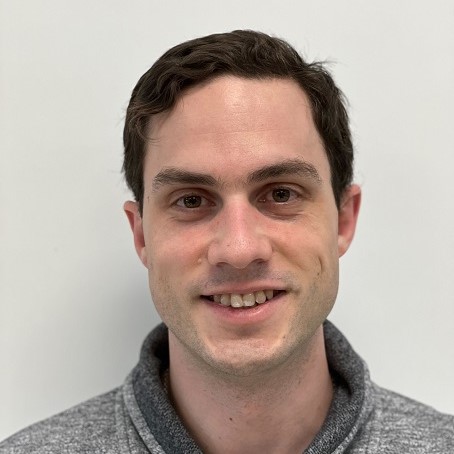
Research Interests:
Andrew joined the WBMG in September 2021, as a graduate student in the School of Electrical Engineering and Computer Science at the University of Ottawa. Previously, he had completed a Bachelor of Mathematics degree at the University of Waterloo with minors in Computational Mathematics and Cognitive Science. Andrew is interested in discovering how the brain works, particularly how it produces consciousness. During his time in the lab, he will be working with multimodal whole brain models and using machine learning to fit them to concurrent resting-state EEG and fMRI/fNIRS datasets. In doing so, he will try to reproduce and explain phenomena observed in neuroimaging studies such as the Alpha Power - BOLD anticorrelation.
Surya Pandiaraju
Co-op Student
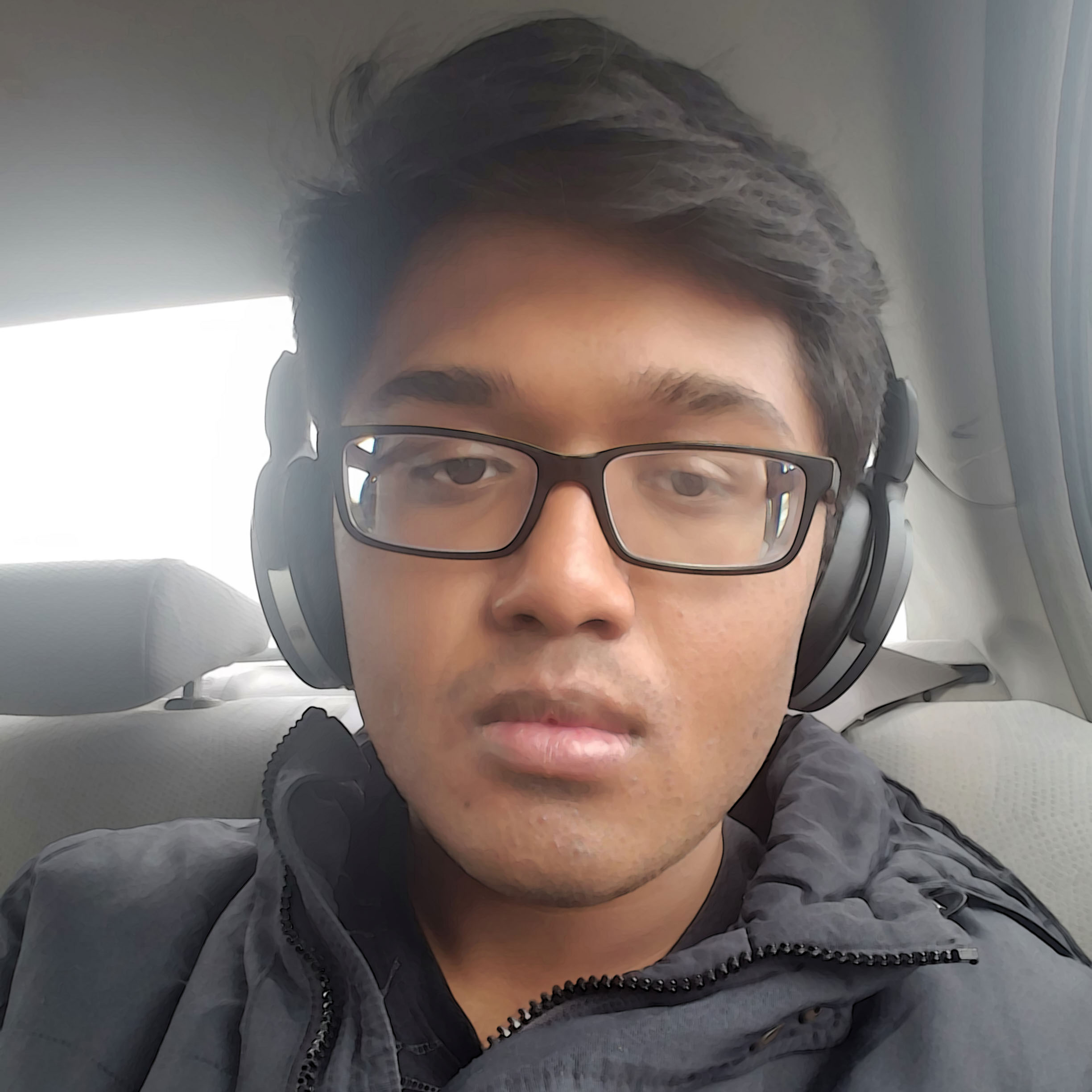
Research Interests:
Surya is a biomedical engineering student at the University of Waterloo. He is co-supervised by Dr. Andreea Diaconescu. He is interested in EEG data analysis and brain-computer interfaces and their applications in both clinical and consumer-based settings. Currently, he is working on a project focused on designing a pipeline for clinically obtained EEG data that would generate first-level and second-level statistical analyses and is doing so by modifying currently existing tools in MATLAB.
Trivia:
Surya enjoys partaking in a number of hobbies including but not limited to drawing (even when he is not supposed to be), digital arts, collectible card games, video games, anime & manga, working out, exploring new restaurants, singing/whistling/beatboxing/humming in the car whilst pretending no one can hear him, and is trying to get his hand in producing after compulsively purchasing a mini MIDI keyboard after watching a video or two on his YouTube recommended list at 12am. If Surya could have any superpower, it would be universal time-control, which he could use to get back the time he spent trying to make this funny.
Dr. Neda Kaboodvand
Post-Doctoral Fellow
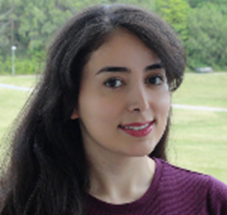
Research Interests:
Neda completed her Ph.D. at the department of clinical neuroscience at Karolinska Institutet, Stockholm, Sweden. In addition, she has master’s in biomedical engineering from Tehran Polytechnic (aka Amirkabir University of Technology), Tehran, Iran. Neda has a strong analytical and computational background, with a growing passion for applying quantitative problem solving and innovative data analysis for solving tangible real-world problems. She has experience in modeling healthy and diseased brains, linear/non-linear time-series and neuroimaging data analysis, statistical and computational modeling of the data, network science and machine learning. She enjoys working in dynamic cross-functional teams on challenging tasks, with measurable real-world outcomes. She joined the lab in July, 2020. She is currently working on whole-brain modelling as well as the analysis and modelling of TMS-evoked responses. The primary aim of her project is to undertake key computational and experimental groundwork for the development and iterative improvement of a novel computational tool for predicting TMS responses and induced plasticity effects. Her long-term aim is to develop computational models of repetitive TMS responses that can be used by clinicians and researchers for optimal patient-specific design of brain stimulation therapies.
Frank Mazza
M.Sc. Student Currently: M.D. Student @ Western University
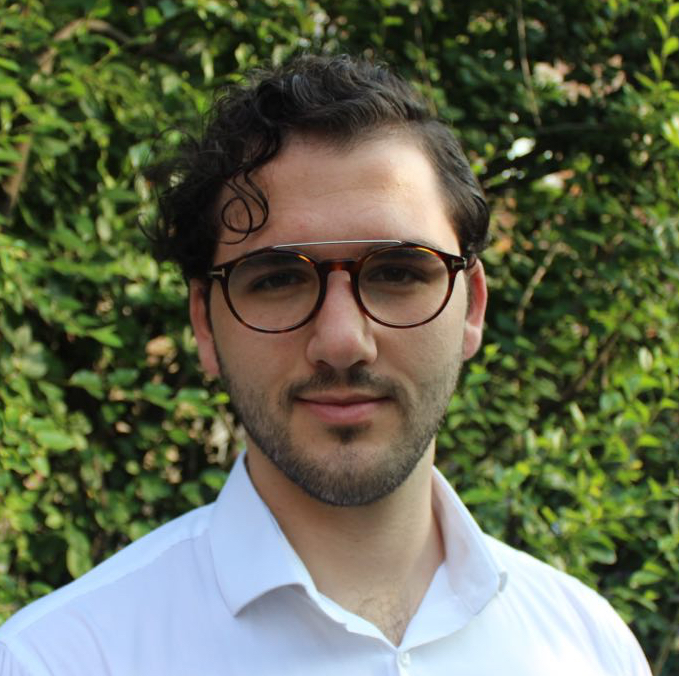
Research Interests:
Frank is a M.Sc. student who joined the lab in September, 2019. He is co-supervised by Dr. Etay Hay (https://www.haybrainlab.com/). Frank is interested in identifying electrophysiological signals for diagnosis of depression and transcranial magnetic stimulation (TMS) protocols for treatment of depression, using computer simulations of detailed brain circuits and whole-brain networks. With previous work in identifying EEG correlates of response in a novel rTMS stimulation paradigm (OFC-rTMS), he now focuses on identifying biomarkers in brain signals for diagnosis of depression by linking cellular, circuit, and connectivity changes to signals relevant for clinical diagnosis. In addition, he is working to optimize TMS protocols using computer simulations at the local and global brain scales by simulating protocol effects on local circuits, such as circuit inhibition, and the propagation of activity to other regions in the brain.
Trivia about Frank:
Frank ‘The Grank’ Mazza. Frank is quite and likes to go about his business, often finishing his work before deadlines, be it grants, abstracts, or manuscripts. Frank does intermittent fasting. No one knows why. Frank likes to read and write about all things art and architecture. He likes to paint, ink, sketch, sculpt and lino-print. Frank has a humble garden where he likes to experiment with growing different plants. He likes to work out and is avid music fan, trying to appreciate everything that isn’t country.